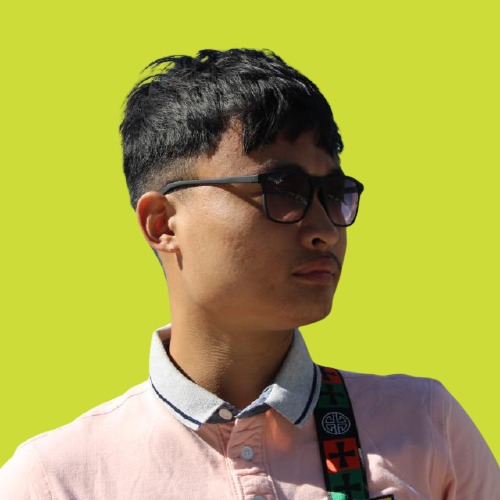The US Federal Bureau of Investigation defines "cyberterrorism" as a deliberate attack on a computer system, computer data, programs, or other material with the express purpose of inflicting violence on clandestine operatives and subnational groups.Cyberterrorism is defined as the use of computer technology to commit acts of terrorism. We must first distinguish between "crime" and "terrorism" because they are similar in certain ways, and both attack societies' capacity to maintain internal order.Terrorism is "political, " whereas crime is "personal".Individuals commit crimes for various reasons, the most significant of which are personal gains and the desire to mentally and/or physically injure ... Read More
Cyber-attackers utilize a Domain Generation Algorithm (DGA) to generate new domain names and IP addresses for malware's command and control servers. It is practically hard for security professionals to detect and limit the attack since it is carried out in a seemingly random manner."Conficker A and B", a family of worms that created 250 domain names every day in the beginning, promoted the tactic. Starting with "Conficker C", the virus would produce 50, 000 domain names each day and contact 500 of them, providing an infected workstation a 1% chance of getting updated every day if the malware controllers only ... Read More
Stuxnet is a computer worm that was created to attack Iran's nuclear facilities but has since mutated and spread to other industrial and energy-generating facilities.The original Stuxnet malware attack was aimed at PLCs, which are used to automate machine processes. It was the first known virus capable of crippling hardware when it was discovered in 2010. It was identified to have been manufactured by the US National Security Agency, the CIA, and Israeli intelligence, generating a frenzy of media attention.Stuxnet works by targeting machines and networks that use the Microsoft Windows operating system, then looking for Siemens Step7 software using ... Read More
In this tutorial, we are going to learn how to set the angle of skew on the x-axis of a Rectangle using FabricJS. Rectangle is one of the various shapes provided by FabricJS. In order to create a rectangle, we will have to create an instance of fabric.Rect class and add it to the canvas.Our rectangle object can be customized in various ways like changing its dimensions, adding a background color or by changing the angle of skew on the x-axis. We can do this by using the skewX property.Syntaxnew fabric.Rect({ skewX : Number }: Object)ParametersOptions (optional) − This parameter ... Read More
Parameter Tampering is a straightforward assault against an application's business logic. This attack takes advantage of how a lot of programmers use hidden or fixed fields as the only security protection for specific actions (such as a hidden tag in a form or a parameter in a URL). Attackers can readily change these settings to get around security systems that rely on them.Web Parameter TamperingWeb parameter tampering flaws are perhaps the most commonly understood danger. Tampering with parameters should be possible on a regular basis with −Query strings in URLsHeaders in HTTPFields in a formCookiesThe Web Parameter Tampering attack is ... Read More
In this tutorial, we are going to learn how to make the controlling corners of Rectangle transparent using FabricJS. Rectangle is one of the various shapes provided by FabricJS. In order to create a Rectangle, we will have to create an instance of fabric.Rect class and add it to the canvas. The transparentCorners property allows us to make the controlling corners of Rectangle transparent.Syntaxnew fabric.Rect( { transparentCorners: Boolean }: Object)ParametersOptions (optional) − This parameter is an Object which provides additional customizations to our rectangle. Using this parameter, properties such as colour, cursor, stroke width and a lot of other properties ... Read More
In this tutorial, we are going to set the angle of rotation of a Rectangle using FabricJS. Rectangle is one of the various shapes provided by FabricJS. In order to create a rectangle, we will have to create an instance of fabric.Rect class and add it to the canvas.The angle property in FabricJS defines the angle of 2D rotation of an object. We also have the centeredRotation property that allows us to use the center point of a rectangle as the origin of transformation.Syntaxnew fabric.Rect({ angle: Number, centeredRotation: Boolean }: Object)ParametersOptions (optional) − This parameter is an Object which provides additional ... Read More
In general, privacy refers to the right to be left alone and the freedom from interruption or intrusion. The right to control how your personal information is gathered and utilized is known as information privacy.The concept of responsible use and protection of information falls under the domain of privacy, which is partially overlapped with security. Body integrity can also be a sort of privacy. Many countries' privacy laws, and in some cases, constitutions, include the right not to be exposed to unjustified intrusions by the government, corporations, or individuals.With the growth of the Internet, the incidence of social bots has ... Read More
In this tutorial, we are going to learn how to make a Rectangle invisible using FabricJS. Rectangle is one of the various shapes provided by FabricJS. In order to create a rectangle, we will have to create an instance of fabric.Rect class and add it to the canvas.Our rectangle object can be customized in various ways like changing its dimensions, adding a background color or by making it visible or invisible. We can do this by using the visible property.Syntaxnew fabric.Rect( { visible: Boolean }: Object)ParametersOptions (optional) − This parameter is an Object which provides additional customizations to our rectangle. ... Read More
In this tutorial, we are going to learn how we can maintain the stroke width of Rectangle while scaling using FabricJS. By default, the stroke width increases or decreases with respect to the object's scale values. However, we can disable this behaviour by using the strokeUniform property.Syntaxnew fabric.Rect({ strokeUniform: Boolean }: Object)ParametersOptions (optional) − This parameter is an Object which provides additional customizations to our rectangle. Using this parameter, properties such as colour, cursor, stroke width, and a lot of other properties can be changed related to the object of which strokeUniform is a property.Options keysstrokeUniform − This property accepts ... Read More

 Data Structure
Data Structure Networking
Networking RDBMS
RDBMS Operating System
Operating System Java
Java iOS
iOS HTML
HTML CSS
CSS Android
Android Python
Python C Programming
C Programming C++
C++ C#
C# MongoDB
MongoDB MySQL
MySQL Javascript
Javascript PHP
PHP
